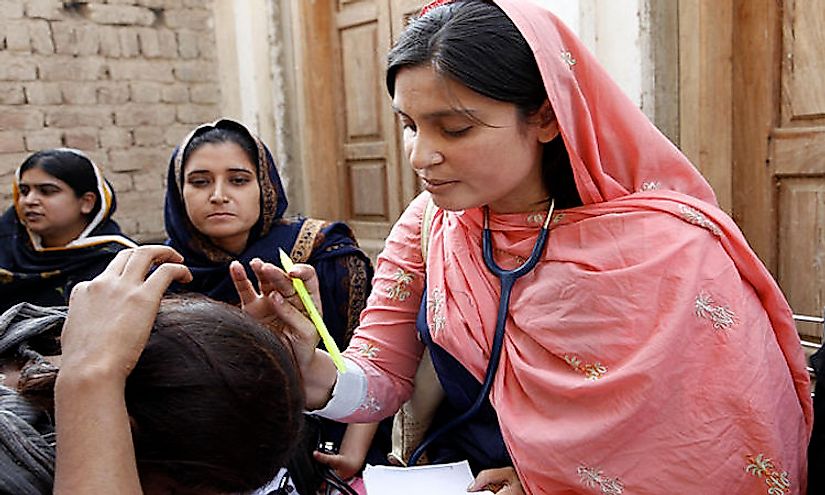Leading Causes Of Death In Pakistan

Pakistan is the sixth most populous country in the world with a population of over 191 million people. The majority of the population comprises of young people from different cultures and ethnic backgrounds. As of 2003, at least 36% of Pakistanis dwelled in megacities and about 50% of the population lived in towns of more than 5000 people.
Leading causes of death in Pakistan include ischemic heart disease and the more common lower respiratory infections. This has contributed to the high mortality rate in the country. The life expectancy for males is 66.5 years while female life expectancy is 67.2 years. When it comes to infant mortality rate, Pakistan is ranked highest. This is because of the number of babies who die on their first day of life, according to a report published in 2012.
The Main Causes Of Death
Ischemic Heart Disease
Ischemic heart disease, also known as coronary artery disease, is the main cause of death in Pakistan. This represents about 8% of total deaths. The Pakistani population is at risk of cardiovascular diseases due to unhealthy diets, lack of exercise and smoking. Furthermore, the vulnerability of ischemic heart disease is powered by high tobacco consumption, high cholesterol, obesity, inactiveness and exposure to unhealthy diets during childhood.
Cancer
Cancer and lower respiratory infections also rank high among the leading causes of death, each representing 8% of all deaths. Over the last two decades, there has been a steady rise in the number of cancer cases. The two main types of cancers are lung cancer common among men and breast cancer among women. Many factors such as lack of public awareness have contributed to the high rate of cancer deaths. Pakistan severely lacks the medical facilities to treat cancer patients, with only 40% able to access decent health care facilities. Diagnostic and treatment facilities are unavailable to the majority 60% of the patients. Due to lack of palliative care, the treatment meant to relieve cancer symptoms, many Pakistanis end up with advanced stages of cancer which diminishes their chance of getting cured.
Acute Respiratory Infections (ARI)
Acute respiratory infections (ARI) are very common among children under the age of 5. This is about 20-30% of all deaths among children over the last 15 years. Lower respiratory infections such as epiglottitis, bronchitis, bronchiolitis, laryngitis bronchopneumonia, pneumonia and less common conditions like empyema and lung abscess are very common due to inadequate health facilities and lack of child survival programs. Additionally, the inadequate training of community health workers and general practitioners means they are not able to deal with emerging cases of lower respiratory infections. Lack of public awareness is also a major contributing factor to the prevalence. However, the recent introduction of child illness initiative by WHO and UNICEF has provided ideal opportunities for detecting and treating the diseases in the early stages. This has significantly reduced the number of deaths by lower respiratory infections.
Other leading causes of death include stroke, diarrheal diseases, Neonatal Encephalopathy, Chronic obstructive pulmonary disease, Tuberculosis, Pre-Term Birth Complications, and diabetes.
Access to better health facilities has proven to be a major setback in reducing the number of deaths in recent years. However, increased public awareness can help reduce the number of deaths caused by these main diseases.
Leading Causes Of Death In Pakistan
| Rank | Cause Of Death | % Of Total Deaths |
|---|---|---|
| 1 | Ischemic Heart Disease | 8% |
| 2 | Cancer | 8% |
| 3 | Lower-Respiratory Infections | 8% |
| 4 | Stroke | 6% |
| 5 | Diarrheal Diseases | 6% |
| 6 | Neonatal Encephalopathy | 5% |
| 7 | Chronic obstructive pulmonary disease | 5% |
| 8 | TB | 5% |
| 9 | Pre-Term Birth Complications | 4% |
| 10 | Diabetes | 3% |











